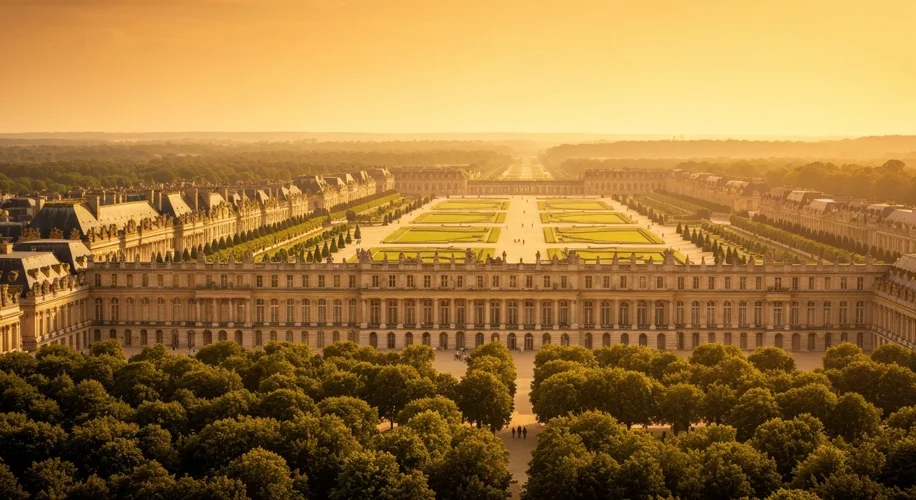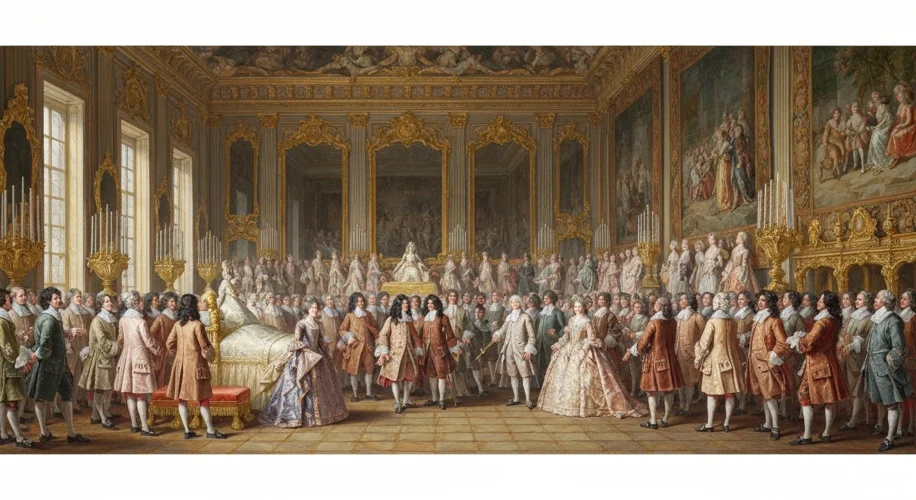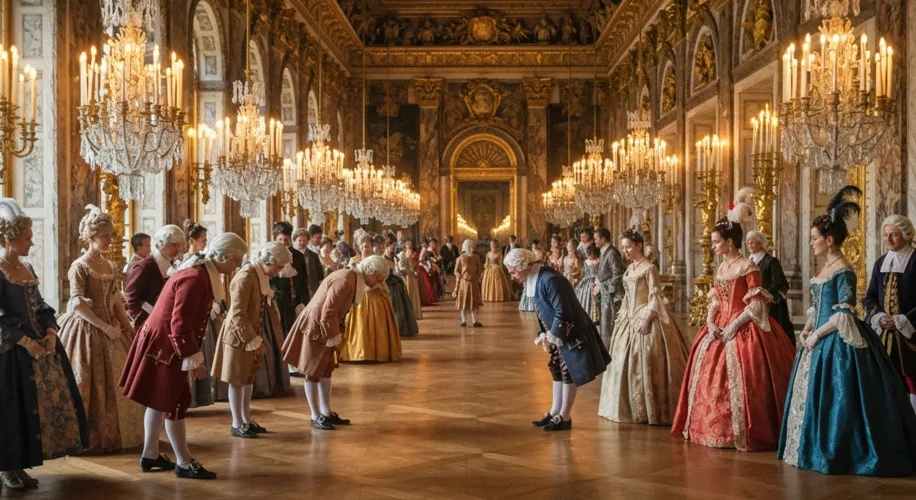The year is 1682. Imagine stepping out of a carriage into a world of gilded splendor, where every surface gleams, and the air is thick with the scent of perfume and ambition. This is Versailles, the opulent palace that became the glittering, gilded cage for Louis XIV, the Sun King of France.
Louis XIV, a monarch who famously declared, “L’état, c’est moi” (I am the state), was not content with merely ruling France from a distance. He sought to centralize power, both politically and symbolically, and what better way than to gather the entire French nobility under his watchful eye, within the walls of his magnificent palace? It was a masterstroke of political theater, transforming potential rivals into courtiers dependent on his favor.

Life at Versailles was a meticulously choreographed ballet of etiquette and ceremony. From the moment the King awoke until he retired, every action was a public spectacle. The lever, or the king’s waking, was a daily ritual attended by hundreds of courtiers, each vying for the honor of handing Louis his shirt or adjusting his periwig. This wasn’t just about personal service; it was about proximity to power, a tangible demonstration of one’s standing at court.
Imagine the sheer scale of it all. By the 1690s, Versailles housed an estimated 3,000 to 10,000 people, including nobles, servants, soldiers, and artisans. The palace itself was a city within a city, a testament to French architectural and artistic prowess. The Hall of Mirrors, with its 357 mirrors reflecting the light from 17 arched windows, was a breathtaking spectacle designed to dazzle and intimidate. The gardens, designed by André Le Nôtre, were equally grand, a symphony of sculpted hedges, fountains, and statues, all meticulously maintained by armies of gardeners.

But beneath the glittering surface, life was a constant competition. Nobles, stripped of their feudal power and forced to reside at court, spent their days currying favor, engaging in intricate political maneuvering, and displaying their wealth and status through fashion, gambling, and elaborate social rituals. A misplaced word, a forgotten bow, or a fashion faux pas could have serious consequences for one’s career and reputation.
Consider the King’s routine. After the lever, Louis would attend mass, then work with his ministers. Luncheon was a relatively private affair, but dinner was often a public spectacle. Evenings were filled with entertainment: operas, ballets, concerts, and gambling. The King was the sun around which this entire celestial court revolved, and all life at Versailles was dictated by his presence and his moods.
The impact of Versailles extended far beyond its walls. It became the model for royal courts across Europe, influencing fashion, art, architecture, and courtly manners. It solidified the French language as the international language of diplomacy and culture. However, the immense cost of maintaining such a lavish lifestyle placed a heavy burden on the French treasury, contributing to the economic woes that would eventually lead to the French Revolution.

In essence, the court of Louis XIV at Versailles was a brilliant, yet ultimately unsustainable, display of absolute monarchy. It was a place where power was both celebrated and subtly undermined, where personal ambition clashed with royal decree, and where the dazzling facade concealed the growing strains that would reshape France and the world. It remains a potent symbol of royal power, artistic achievement, and the intricate dance of human ambition at the zenith of European absolutism.

